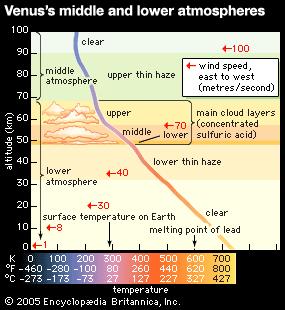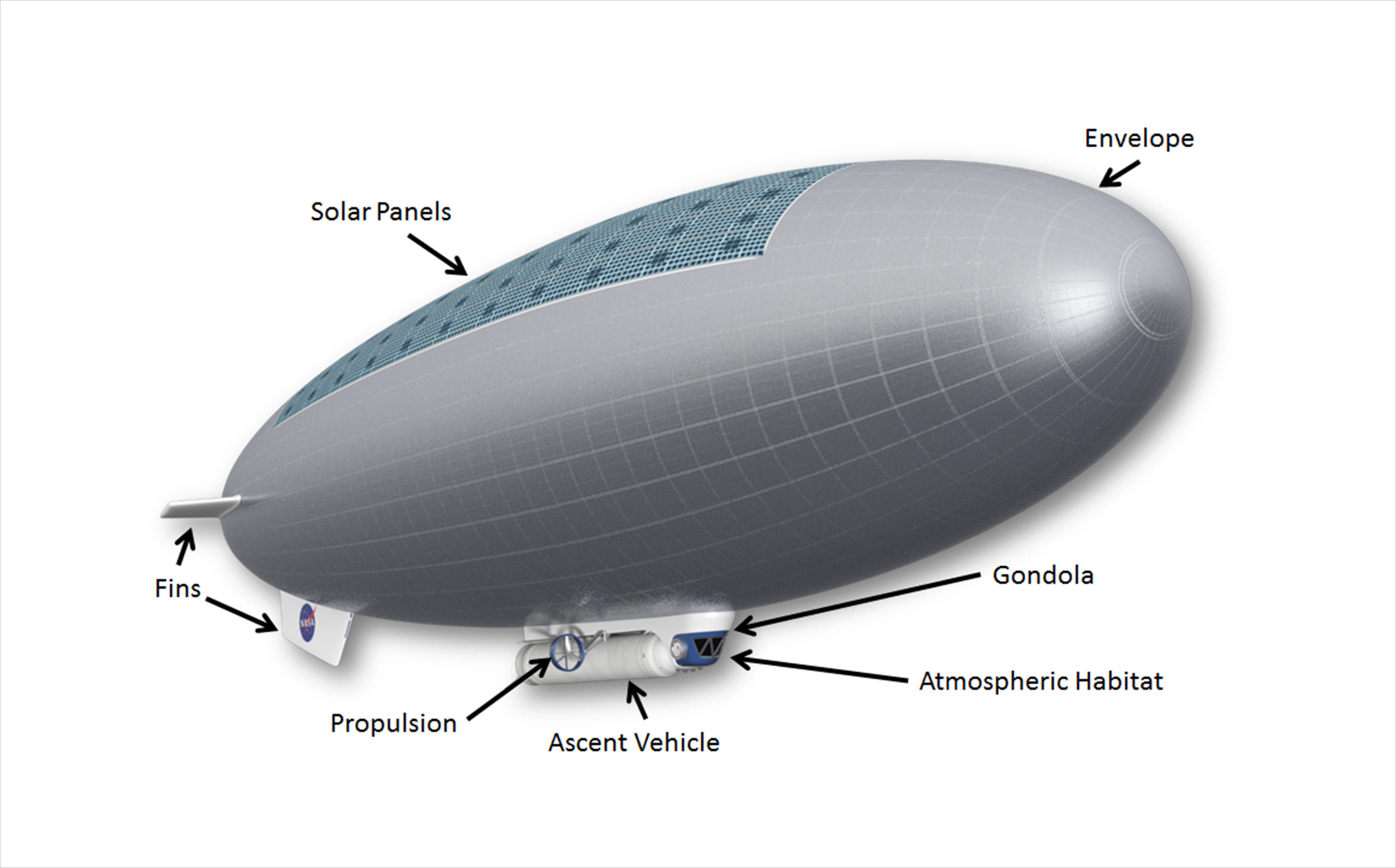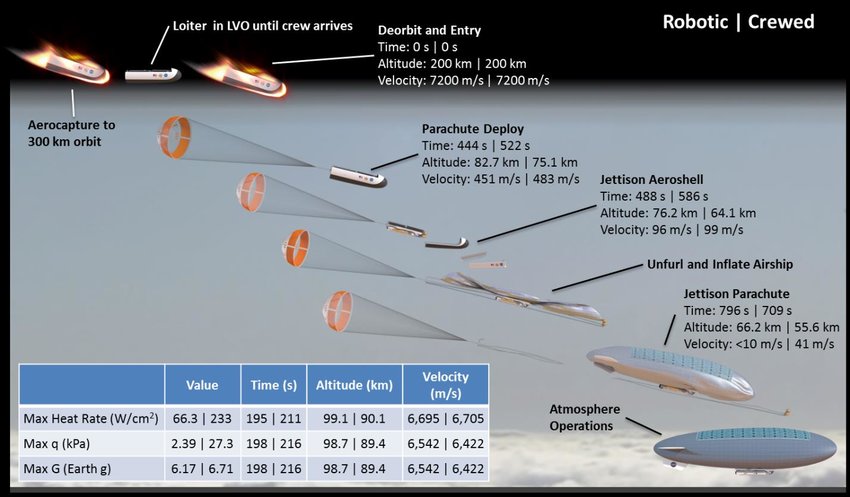The Venusian Sky Cities of Our Future
Written by: Laya Gopalakrishnan
Surfacism: an ideology detailing human nature’s affinity towards physically colonizing or marking land to claim and inhabit it. Though “surfacism” is not a legitimate word included in any existing dictionaries, according to Dr. Gabe Perez-Giz, former host of “PBS Space Time,” it is still a prevalent issue, most notably in the field of space exploration and habitation. In recent years, space scientists have looked towards colonizing the surface of Mars, yet many jarring flaws lie in this plan. Not only does Mars have a thin atmosphere, making the planet more susceptible to radiation from the sun, but its gravitational force is around 37.5% of that of Earth’s. Still, humanity’s long established obsession with “planting the flag” so to speak, has led to Mars being considered the perfect planet. Now, the question may arise: if not Mars, what is the ideal planet for colonization? Well the answer lies quite literally closer than one may at first imagine: our sister planet, Venus! Or rather, Venus’s dense, upper atmosphere. Venus’s upper atmosphere provides near Earth-like conditions and is dense enough, possibly allowing for floating habitats to populate the barren Venusian skies.
Location, Location, Location!
Venus’s surface is nothing short of hellish. Acid rain composed of sulphuric acid torments the planet’s volcanic surface. With temperatures reaching up to 480oC (900oF)—hot enough to melt lead—and a surface pressure ninety-five times that of Earth’s, it is no wonder why many may be quick to dismiss the idea of colonizing Venus’s surface. The constant threats of corrosive high-pressure carbon-dioxide, molten rock, and lava flow, create an ever changing, unlivable, grim landscape, a stark difference from life above the clouds.
Figure 1

Venus’s surface is far from habitable, with its pressure-cooker-like atmosphere and high temperatures.
Source: [Mental Landscape]
The Venusian atmosphere can be split up into four parts: the upper atmosphere, middle atmosphere, main cloud layers, and lower atmosphere. The upper atmosphere contains the outermost portion of the Venusian skies, extending outward to the fringes of the planet’s atmosphere. It is the coolest part of the planet, reaching around 27 – 37oC at its warmest and less than -173oC at its coldest. From here, the temperature steadily increases to around -100oC at the 100 km mark. This altitude marks the end of the upper atmosphere and the beginning of the middle atmosphere. The middle atmosphere extends downwards from the 100 km mark to just above the continuous cloud deck.
From 50 km to 70 km begin the main cloud layers, composed of large, quick-moving clouds of sulfuric acid, high winds, and acid rain. Radio waves, hinting at the existence of lightning and thunderstorms, have been observed in the Venusian cloud layers. This paired with the variance in cloud tenuity suggests a meteorologically active upper cloud layer. The lower half of Venus’s cloud layer provides near perfect conditions for human habitation. Here, temperatures reach around 70oC (158oF) and pressure, about 1 atm, similar to being 34 feet under water. Heat resistant clothing—similar to firefighter garments that can withstand up to 2000oC (3632oF)—and oxygen tanks can create quick fixes to these issues.
Figure 2

The Venusian atmosphere can be split up into four parts: the upper atmosphere, middle atmosphere, main cloud layers, and lower atmosphere.
Source: [Encyclopædia Britannica]
Finally, the lower atmosphere, extending downwards from around 50 km above Venus’s surface. It is a common misconception that Venus absorbs a large amount of light from the Sun, and, as a result, is one of the hottest planets in the solar system. In reality, the Venusian atmosphere reflects a large portion of the sunlight it comes into contact with, and is partly to thank for it’s intense “glow”. The planet’s thick cloud layer reflects about 70% of the sunlight that reaches it, back into space. Using the albedo light measurement scale – which quantifies the proportion of sunlight a planet reflects versus what it receives – scientists have capped Venus at an albedo of 0.77, compared to Mars’s 0.25. What little sunlight that does reach the planet’s surface is trapped there due to an intense greenhouse effect. Therefore, choosing a density sweet-spot in the Venusian atmosphere proves to be much easier than the now popularized idea of creating a thicker atmosphere on Mars.
Despite the Venusian atmosphere being the planet’s most prevalent and diverse feature, surfacism continues to look past the great potential that living among the stars has to offer. Though the ideology can be excused to some degree considering that human’s relation to air travel is just that, temporary transit, living on the surface of many of the planets in our solar system is an unrealistic expectation. Therefore it is of utmost importance that we broaden our scope of expected locals for habitable planetary locations, looking beyond—or above—surfacism.
HAVOC! in the Atmosphere
The idea of colonizing Venus gained short-lived popularity with NASA. The High Altitude Venus Operational Concept, a now inactive project, sought to develop the mission architecture and vehicle concept for a 30 day crewed mission into Venus’s atmosphere,” – NASA Systems Analysis and Concepts Directorate. In this mission, two separate airships would be used: one to transport the crew, and one to transport the blimp-like LTA (lighter-than-air) airship, for crew habitation.
Figure 3

The LTA itself would be fitted with various “bells and whistles”, so to speak.
Source: [NASA Technical Reports Server]
The LTA airship would travel at a higher speed, loitering in LVO (Lower Venusian Orbit) until the manned airship arrived. Then, two airships would connect, crew would be transported into the LTA airship, and the LTA airship would descend into the Venusian atmosphere, shedding any unnecessary protection once at the target 50 km range, and unfurling into a blimp. It is important to note that the blimp itself is not a habitat, merely a flotation device for the crew quarters. Attached to the LTA will be various robots and rovers that will deploy onto the Venusian surface for observational purposes. It may be possible in the distant future to bring back samples, but this would mean creating robots strong enough to travel through the Venusian atmosphere, onto it’s treacherous surface, and back, unscathed. Additionally, the possibility of contaminating the crew quarters with Venusian surface debris or gasses in the Venusian atmosphere pose great risks.
Figure 4

HAVOC decent mission architecture
Source: [NASA Technical Reports Server]
After a successful mission, the ascent vehicle containing the crew quarters would detach from the LTA, and fly up toward the original crew airship, which has since remained in LVO. The crew quarters will detach from the ascent vehicle and attach to the crew airship, which will then begin it’s travel back towards Earth. The LTA and ascent vehicle will remain on Venus and be destroyed upon reaching the planet’s surface.
Conclusion
Space colonization is inevitable. Though launching a manned mission to Venus will likely occur far after any Mars missions, if at all, the exploration of planets other than our own will remain a goal of space scientists to come. The colonization of any planet, regardless of surfacism bias, will be a groundbreaking moment for humanity. And who is to say? The exploration and colonization of planets within our solar system may, eventually, lead to manned travel beyond our patch of the universe, delving deeper into our galaxy and beyond.
References and Sources
Crew, B. (2021). Should We Be Trying to Colonise Venus Instead of Mars?. Retrieved 18 November 2021, from https://www.sciencealert.com/should-we-be-trying-to-colonise-venus-instead-of-mars
Mars Facts | All About Mars – NASA’s Mars Exploration Program . (2021). Retrieved 18 November 2021, from https://mars.nasa.gov/all-about-mars/facts/
Mitchell, D. (2021). Soviet Venus Images. Retrieved 18 November 2021, from http://mentallandscape.com/C_CatalogVenus.htm
In Depth | Venus – NASA Solar System Exploration. (2021). Retrieved 18 November 2021, from https://solarsystem.nasa.gov/planets/venus/in-depth/
The Planet Venus. (2021). Retrieved 18 November 2021, from https://www.weather.gov/fsd/venus#:~:text=Atmosphere%20and%20Weather%3A%20Venus%20has,up%20%20primarily%20of%20sulfuric%20acid
Most acidic rain in the Solar System. (2021). Retrieved 18 November 2021, from https://www.guinnessworldrecords.com/world-records/100251-most-acidic-rain-in-the-solar-system
Venus – The atmosphere. (2021). Retrieved 18 November 2021, from https://www.britannica.com/place/Venus-planet/The-atmosphere
What Is the Atmosphere, Pressure, and Temperature Like on Venus?. (2020). Retrieved 18 November 2021, from https://www.thegreatcoursesdaily.com/what-is-the-atmosphere-pressure-and-temperature-like-on-venus/
Profile of Venus’s atmosphere. (2021). Retrieved 21 November 2021, from https://www.britannica.com/place/Venus-planet/The-atmosphere#/media/1/625665/47470
HAVOC | SACD. (2018). Retrieved 21 November 2021, from https://sacd.larc.nasa.gov/smab/havoc/
Lugo, R., Ozoroski, T., VanNorman, J., Arney, D., Dec, J., Jones, C. and Zumwalt, C., 2021. HIGH ALTITUDE VENUS OPERATIONS CONCEPT TRAJECTORY DESIGN, MODELING, AND SIMULATION. 1st ed. [ebook] Williamsburg: NASA, pp.2,4. Available at: <https://ntrs.nasa.gov/citations/20150006858> [Accessed 21 November 2021].